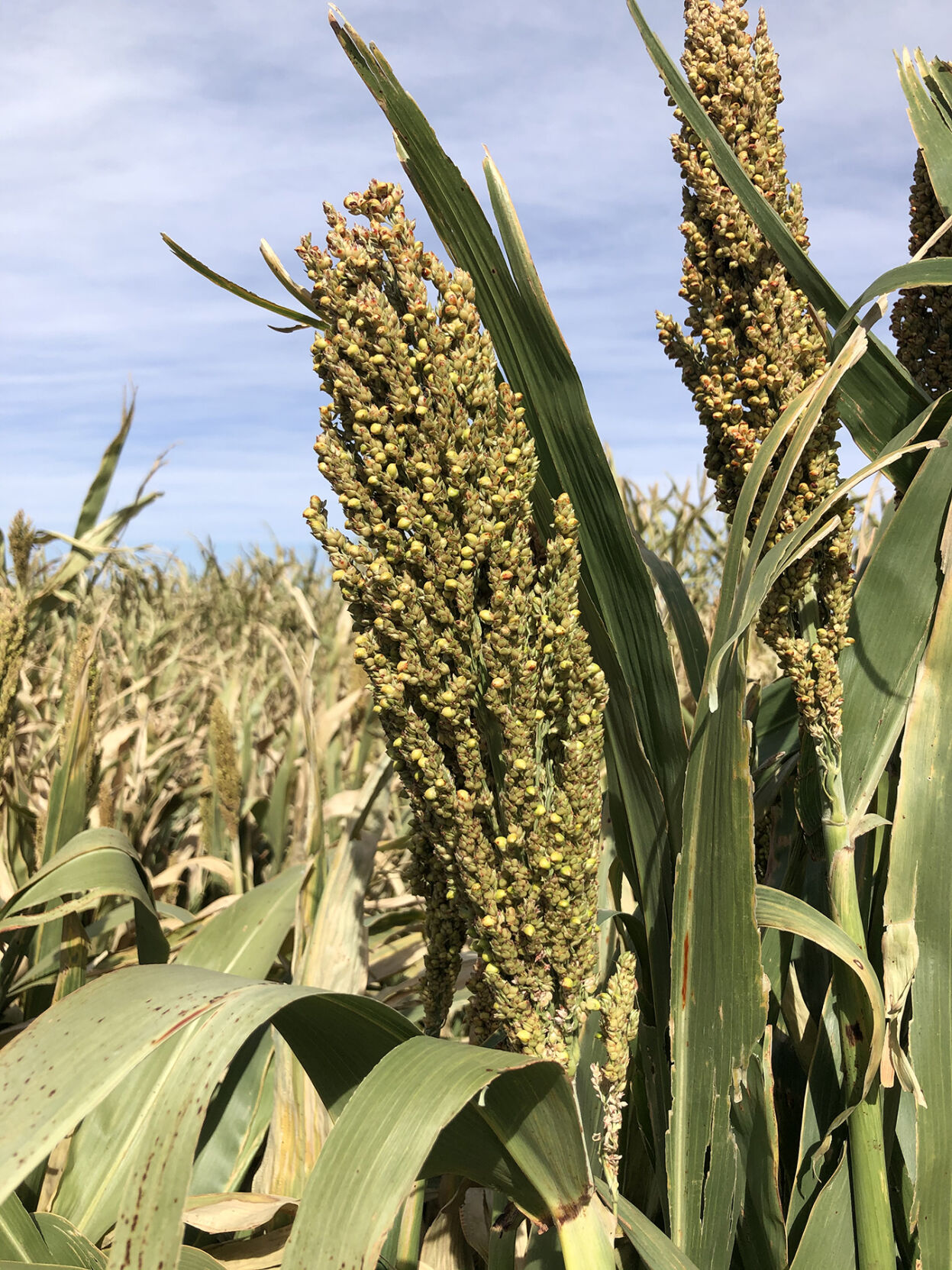The 2020 Texas A&M AgriLife Research and Extension Forage Sorghum Silage Trial was grown during a summer cropping season marked by hot, dry and windy conditions as well as a Sept. 9 cold front. Grown near Bushland, the trial consisted of 71 sorghum hybrids including forage sorghums, sorghum-Sudan grasses and grain sorghum hybrids.
Evaluated hybrids included brown midrib and brachytic variants.
“Lower-than-average yields in 2020 were a function of stressful environmental conditions, which resulted in reduced biomass production and poor grain development,” said Jourdan Bell, Ph.D., Texas A&M AgriLife Extension Service agronomist, Amarillo.
Yields decline under weather stress
The average forage yield was 18.2 tons per acre with yields ranging from 12.3 to 25.3 tons per acre at 65% moisture. In comparison, the average yield in 2019 was 22.2 tons per acre with yields ranging from 18.4-28.8 tons per acre.
While sorghum yields were significantly reduced by weather conditions, the impact is very noticeable when evaluating corn hybrid checks, Bell said. Because corn silage is the silage of choice, corn hybrids are included as a check in the AgriLife forage sorghum trials at Bushland. The Bushland trial is conducted under conditions representative of regional, limited-irrigated forage production systems, so corn hybrids are a good indication of the in-season stress as well as the yield potential of sorghum in a water-stressed environment.
While corn hybrids have the ability to make up to 30 tons per acre under well-watered conditions, yields will be reduced in a water-limited environment, she said. However, sorghums do not shut down as quickly under water stress. In 2019, the average corn yield was 17.7 tons per acre while in 2020 the average corn yield was 12.6 tons per acre at 65% moisture.
Damage comes in waves
Bell said the 2020 in-season precipitation totaled 6.24 inches, with none of that occurring after Sept. 9. Although sorghum is a heat-tolerant crop that can withstand temperatures as high as 104 degrees, crop water demand increases with elevated temperatures. Limited crop water—soil moisture, precipitation and irrigation—compounded plant responses to heat stress, resulting in curling leaves, poor panicle exertion, stunted height and reduced biomass in some hybrids.
Adding insult to injury, the crop was hit by another weather extreme on Sept. 9, when temperatures dropped to as low as 35 degrees at a critical sorghum grain development stage and further impacted yields. This is significant because grain adds both tonnage and energy to the forage.
These temperature extremes resulted in variable pollination for hybrids that bloomed after early September, she said. Because grain yield can be a significant component of forage tonnage, yields for many hybrids were reduced due to poor pollination.
“We also noted the 2020 starch levels as an indication of lower grain yields,” Bell said. “During grain fill, assimilated carbohydrates are translocated to the developing grain and converted to starch. If grain does not develop, starch levels will remain low.”
She said the impact of the 2020 season is evident when comparing starch concentrations between the 2019 and 2020 trials. In 2019, the average starch concentration for sorghum hybrids was 15.1%. In comparison, the average starch concentration for sorghum hybrids in the 2020 trial was 8.6%, with values ranging from 0.1% to 27.6%.
Lessons learned
Bell said the trial was grown under center pivot irrigation within a production forage sorghum field that was irrigated at approximately 50% evapotranspiration demand of the crop.
“Since we are comparing 71 hybrids in the same production environment, the 2020 data provides a very good indication of how different forage sorghums compared side-by-side,” she said. “The 2020 data demonstrated that yields for early maturing hybrids were more consistent with previous years because of grain development, but there were still later maturing hybrids that performed well because of the hybrid’s tonnage potential.”
Bell said producers realize that water stress is increasingly a problem as water supplies decline so they understand variability in yields due to water stress. However, she added, the early season cold front was not normal, so it is important producers also consider data from previous years.
“As we look at the extended 2021 forecast, we are expected to be dry through the spring,” she said. “Under dry conditions, producers with limited irrigation may need to evaluate their forage plan for this summer. We need to be realistic about well capacities and not over-plant acres in anticipation of rainfall.”
Bell said while forage producers understand sorghum needs to be placed on the sorghum acre, it is becoming increasingly important for livestock producers to understand that many producers no longer have the well capacity for high-yield corn silage.
“Consequently, it will become a concerted effort between forage and livestock producers to meet the regions forage demands with limited water,” she said.




